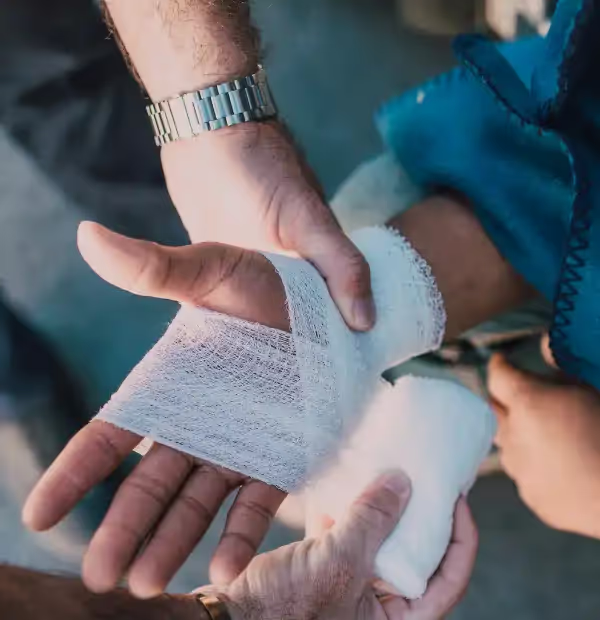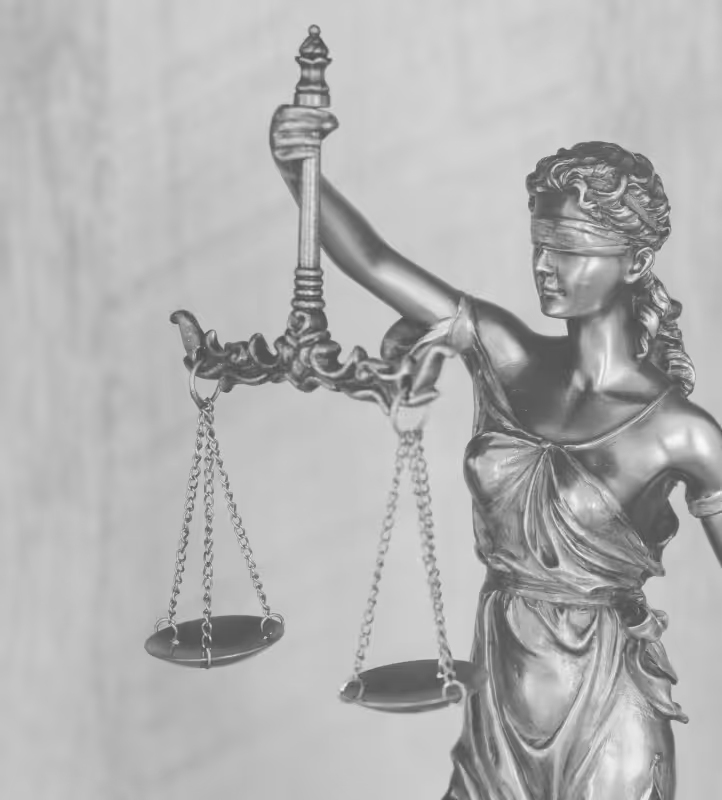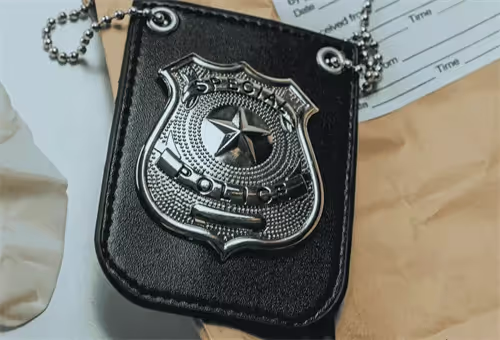Recklessly Causing Grievous Bodily Harm (GBH) or Wounding

Understanding Recklessly Causing Grievous Bodily Harm or Wounding
In New South Wales (NSW), offences involving Grievous Bodily Harm (GBH) and wounding are treated with the utmost seriousness. While many are familiar with intentional acts of violence, the law also criminalises reckless conduct that leads to serious injury. Under NSW law, recklessly causing GBH or wounding is a distinct offence from intentional harm, but it still carries significant penalties due to the serious nature of the resulting injuries.
Grievous Bodily Harm (GBH) is defined under the Crimes Act 1900 (NSW) as “any serious or permanent disfigurement, the destruction of a fetus, or the transmission of a grievous bodily disease.” Whilst GBH does not need to be life-threatening or permanent in every case, it must be considered a “really serious” injury. Whether an injury meets this threshold is assessed on a case-by-case basis, taking into account factors such as the nature and severity of the injury, where on the body it occurred, and the victim’s potential for recovery and rehabilitation.
Grievous bodily harm (GBH) refers to significant injuries such as:
- Broken bones or fractures
- Permanent disfigurement
- Severe internal injuries
- Injuries that endanger life or require long-term medical treatment
RGBH charges require proof of recklessness rather than intent to harm, but the victim must suffer severe harm that is more than a trivial injury.
Elements the Prosecution Must Prove
To convict someone of RGBH, the prosecution must prove:
- Reckless Conduct –The accused acted recklessly, without regard for the victim's safety
- Grievous Bodily Harm – The assault resulted in significant harm to the victim.
- Causation – The defendant's actions directly caused the injury.
Additionally, the prosecution must rule out any lawful justifications for the act.
Possible Defences
Defence may include:
- Self-Defence– If the accused acted to protect themselves or others from imminent harm.
- Duress – If the accused was forced to committhe act due to threats of serious harm
- Necessity –If the action was taken to prevent greater harm from occurring.
- Lack of Recklessness – If the accused did not act recklessly or did not foresee the risk of harm.
A qualified lawyer can evaluate the circumstances of your case to develop an effective defence.
Potential Penalties
Penalties for RGBH depend on the case's seriousness and circumstances, including:
- Conditional Release Order (CRO) – A good behaviour bond
- Community Correction Order (CCO) – A supervised order
- Intensive Correction Order (ICO) – A custodial sentence served in the community
- Imprisonment – Up to 10 years in prison
The court considers injury severity and prior criminal history when determining the sentence.
The offence of recklessly causing GBH or wounding is primarily governed by the Crimes Act 1900 (NSW). The two main provisions are:
- Section 35(1): Recklessly cause grievous bodily harm in company
- Section 35(2): Recklessly cause grievous bodily harm
- Section 35(3): Recklessly wound in company
- Section 35(4): Recklessly wound
Each of these subsections outlines a specific category of reckless violence, with higher penalties applying where the offence is committed “in company”, meaning with one or more other persons present and participating.

Legal Process
& Options
If charged with RGBH, the legal process includes an investigation, court hearing, and potentially a trial. The outcome depends on whether the accused pleads guilty or not guilty. Legal representation is crucial to ensure the best possible outcome, whether through a defended hearing or plea negotiation.
Pleading
Not Guilty
If you dispute the charges, pleading not guilty allows your lawyer to challenge the evidence, question the credibility of witnesses, and argue that the injuries were not as severe as claimed. If the prosecution fails to prove their case, you may be acquitted.
Pleading
Guilty
Pleading guilty may result in a more lenientsentence, particularly if you show remorse and cooperation. The court mayconsider factors such as:
- No prior criminal record
- Character references
- Objective seriousness
- Subjectives of the offender
- Remorse and rehabilitation efforts
A guilty plea could lead to a reducedsentence, potentially avoiding lengthy imprisonment.
No, actual injury is not required. It is enough that your behaviour would cause a person of reasonable firmness present at the scene to fear for their safety.
- No.
Yes, affray can happen in a private setting if a “person of reasonable firmness” would be fearful if they were present.
If you acted in self defence or your actions were reasonable given the circumstances, this may be a viable legal defence for your case. It is important to seek legal advice and representation to argue your case justly.
Yes, but a custodial sentence is not inevitable. Depending on the circumstances of your case, first time or cases of low objective seriousness may receive non-custodial sentences.
- No
Physical contact is not always necessary. You can be charged with common assault simply for threatening or attempting to cause harm, as long as the victim had a reasonable fear of immediate violence.
- Yes
A conviction for common assault will result in a criminal record, which can affect your employment, travel, and future opportunities.
However, it may be possible to avoid a conviction if the court is persuaded to deal with the matter under Section 10.
Once charges are laid, it is up to the police or prosecution to proceed or withdraw them, not the victim. While a victim’s wishes may be taken into account, the decision to continue lies with the Director of Public Prosecutions (DPP) or NSW Police.
- Yes
A verbal threat can amount to common assault if it causes the victim to fear immediate and unlawful violence.
The threat must be serious enough and made in a context where the victim genuinely believes harm could occur imminently.
The main difference lies in the extent of injury. Common assault does not require proof of injury, while AOABH involves physical harm that is more than transient or trifling, such as bruises, cuts, or psychological trauma. AOABH carries heavier penalties.
You should not be found guilty if you acted in lawful self-defence. The court will consider whether you believed the force was necessary and whether your response was proportionate. This is a common and valid legal defence.
- No
Injury is not required. Common assault can occur from a threatening gesture, a slap, a shove, or any act that causes another person to fear unlawful force or experience minor physical contact without consent.
Failing to attend court may result in a warrant for your arrest being issued. It is crucial that you appear in court on the specified date or arrange legal representation to act on your behalf if possible. Always contact the court or your lawyer if you’re unsure.
- Yes, but only at the discretion of the police or the prosecution.
If there is insufficient evidence or the alleged victim refuses to cooperate, the prosecution may withdraw the charge upon the negotiation between the lawyer and the police. However, charges can still proceed even without the victim’s support.
- Yes, courts in NSW can issue a non-conviction outcome under Section 10 of the Crimes(Sentencing Procedure) Act 1999.
This means you are found guilty but no conviction is recorded. This may be more likely if the offence was minor and you have no prior record.
Common Assault involves causing fear orapprehension of immediate violence or minor physical contact withoutsignificant injury. AOABH involves an assault that causes actual physicalinjury beyond minor or transient harm.
“Actual bodily harm” includes injuries that interfere with the health or comfort of the victim and are more than insignificant. Examples include:
- Bruising or swelling
- Lacerations or cuts
- Nosebleeds
- Yes, it isan indictable offence.
However, it is triable summarily in the Local Court under certain conditions (depending on seriousness and election by the prosecution or defence).
- Yes
If a single punch causes injuries such as bruising, lacerations, or a nosebleed, it may be sufficient to support an AOABH charge.
This offence occurs when a person:
- Assaults, resists, hinders, obstructs, or intimidates a police officer,
- While that officer is acting in the execution of their duty.
It is covered under Section 58 of the Crimes Act 1900 (NSW). It includes physical force, verbal threats, or any act that interferes with an officer’s lawful role.
Resisting refers to any physical or active opposition to a lawful police action (e.g., pulling away during arrest). Hindering may involve more passive interference, such as:
- Giving false information
- Blocking police from accessing a location
- Encouraging someone else to resist arrest
- No
The officer does not need to be in uniform, but they must identify themselves clearly as a police officer.
The offence only applies when the officer is lawfully performing their duties (e.g. not off-duty or acting unlawfully).
If you can prove that you reasonably believed your actions were necessary to defend yourself or another, you may have a valid self-defence argument. This defence must be carefully supported by the circumstances and facts.
To be found reckless, the court must find that a reasonable person in your position would have realised there was a substantial risk of causing serious injury. If the risk was not obvious or foreseeable, that may be a defence. A classic example could be, one threw a glass bottle towards another person’s face, which caused a blind eye. A reasonable person would realise the eye could have been injured by do so.
In some cases, legal representatives can negotiate with the prosecution to reduce the charge to assault occasioning actual bodily harm (AOABH) or common assault, depending on the injury, evidence, and intent.
"Wounding" involves breaking both the inner and outer layers of the skin (e.g. a deep cut or puncture), while "GBH" involves more severe or permanent injuries.
Wounding with intent is serious, but GBH with intent usually results in harsher penalties due to the greater level of harm caused.
“To cause GBH or wounding with intent” means the prosecution must prove that the accused deliberately intended to cause serious harm or injury to another person, not just acted recklessly.
It is important to note that intent is a crucial element and must be proven beyond reasonable doubt.
- Yes
If the prosecution can prove there was intent to cause GBH or wounding even if the harm wasn’t permanent or as severe as intended you can still be convicted under Section 33 of the Crimes Act 1900(NSW).
- Yes
- A Criminal lawyer can help you by:
- Explaining your rights and the legal process.
- Assessing whether you have valid defence.
- Negotiating with prosecutors to reduce charges or penalties.
- Preparing your case for court and advocating on your behalf.
- Helping minimise the impact on your future, such as avoiding a criminal record.
- Early legal advice can significantly improve your chances of a favourable outcome.
You should contact a criminal lawyer as soon as you are charged, approached by police, or if you believe you may be under investigation.
Early legal advice is critical in protecting your rights and preparing your defence.
- Look for a criminal lawyer with proven experience in defending assault and violence offences, strong knowledge of local courts, and a history of achieving successful results for clients.
If you can prove that you reasonably believed your actions were necessary to defend yourself or another, you may have a valid self-defence argument. This defence must be carefully supported by the circumstances and facts.
To be found reckless, the court must find that a reasonable person in your position would have realised there was a substantial risk of causing serious injury. If the risk was not obvious or foreseeable, that may be a defence. A classic example could be, one threw a glass bottle towards another person’s face, which caused a blind eye. A reasonable person would realise the eye could have been injured by do so.
In some cases, legal representatives can negotiate with the prosecution to reduce the charge to assault occasioning actual bodily harm (AOABH) or common assault, depending on the injury, evidence, and intent.
- Yes
- A Criminal lawyer can help you by:
- Explaining your rights and the legal process.
- Assessing whether you have valid defence.
- Negotiating with prosecutors to reduce charges or penalties.
- Preparing your case for court and advocating on your behalf.
- Helping minimise the impact on your future, such as avoiding a criminal record.
- Early legal advice can significantly improve your chances of a favourable outcome.
You should contact a criminal lawyer as soon as you are charged, approached by police, or if you believe you may be under investigation.
Early legal advice is critical in protecting your rights and preparing your defence.
- Look for a criminal lawyer with proven experience in defending assault and violence offences, strong knowledge of local courts, and a history of achieving successful results for clients.
SUCCESS CASES & ARTICLES
Brightstone Defence delivers focused criminal defence services year-round and has built a strong track record of successful outcomes.
Meet our lawyers
WORLD CLASS
REPRESENTATION
100+ 5 Star Reviews
Personalised legal strategies tailored to each case
Recognised leaders in criminal defence law
Free initial consultation and case evaluation
Proven success in high-stakes and complex cases
Get AN instant estimated Quote
and a free consultation session
Facing criminal charges? Our experienced criminal defence lawyers are here to help. Book your free consultation now to discuss your case and understand your options.










